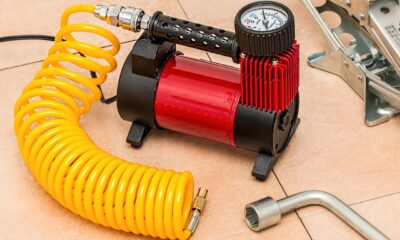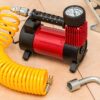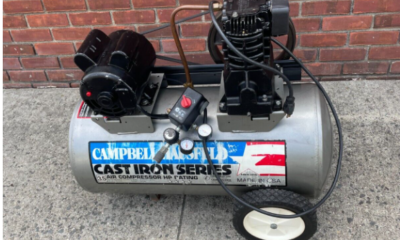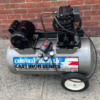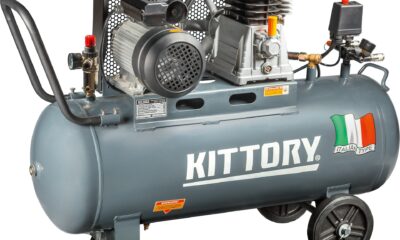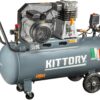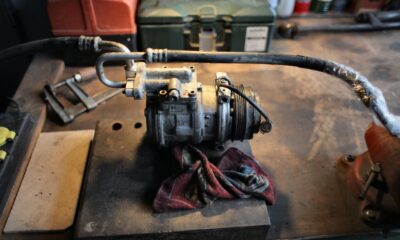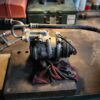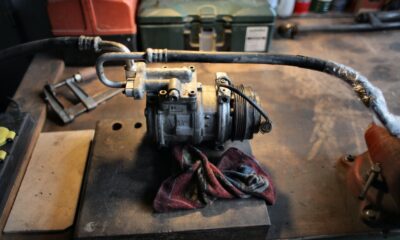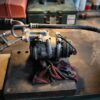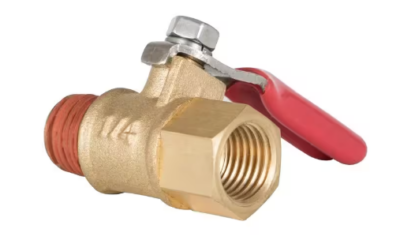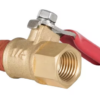what size air compressor do I need for air tools
If you frequently use air tools, it’s essential to know the right size air compressor needed for optimal performance. However, size doesn’t solely determine an air compressor’s power. Rather, it’s crucial to assess your tools’ air requirements and select an air compressor size that fits those needs.
What Exact Size Air Compressor Do I Need to Run Air Tools?
- Air tools require air compressors with varying levels of power. Typically, most air tools function efficiently with air compressors in the 10 to 110 CFM (Cubic Feet Per Minute) range. For smaller tasks like inflating passenger tires or running compact tools such as grinders, chippers, or sanders, a lower CFM rated air compressor is suitable.
- However, if you’re operating industrial tools, inflating OTR (Off-The-Road) tires, or using larger tools such as a 1” impact wrench or a 90 lb jackhammer, a higher CFM air compressor is more appropriate. Always ensure to select an air compressor that aligns with the CFM requirements of your most demanding air tool.
Is a Bigger Compressor Better For an Air Tool?
Bigger isn’t always better when it comes to air compressors. While it might be tempting to assume that a larger air compressor will deliver more power, this isn’t always the case. For example, some large-looking air compressors deliver low air output, while some compact ones produce high air output.
Moreover, not all manufacturers focus on minimising size without compromising power. Hence, it’s better to assess an air compressor’s capability based on how much air it delivers (measured in CFM) rather than its physical size.
How To Determine Your Air Compressor Size for Air Tools
To determine the right air compressor size for your air tools, you need to:
- Look at the CFM requirements for the most demanding air tool you use.
- Check if the CFM rating is for a 100% duty cycle, considering that many continuous-use tools are still rated as if you’re only using them 50 to 60%—you will need a higher CFM rating if you don’t want to stop regularly.
- If you use multiple tools simultaneously, combine their CFM rating to ascertain your need.
Once you understand the CFM requirement of your most demanding tools, you’ll know how powerful your air compressor needs to be. Try to find an air compressor sized to meet your air output needs without exceeding significantly.
Air Tool Consumption Chart Of Air Compressor
For a more accurate estimate of your air power needs, you can refer to a tool consumption chart or guide. These break down the typical CFM required for most tools, making it easy for operators to estimate their CFM requirements. For example:
| Air Compressor Size (CFM) | Tool Type |
| 30-40 CFM | ¾” impact wrench, Air hammers, Sanders |
| 60-70 CFM | 1” impact wrench, Pneumatic saws, Die grinders |
| 90-100 CFM | #5 spline impact wrench, 90 lb pavement breaker, Vertical & angle grinders |
Takeaway
Choosing the right air compressor size is crucial for the smooth operation of your air tools. This doesn’t always equate to choosing the physically largest air compressor but rather selecting one that can deliver the CFM requirements of your most demanding tools. By considering these factors, you can ensure you get the most out of your air tools without any unnecessary power wastage.
Frequently Asked Questions
1. How Do You Calculate CFM Of Air Compressor For Sir Tools ?
You can calculate an air compressor’s CFM value using the following steps:
- Find the volume of the air compressor tank in gallons. Most manufacturers specify this on the product.
- Divide the value by 7.48 to get your tank volume in cubic feet.
- Release air from the compressor.
- Refill the air compressor with air, recording the time it takes to refill the tank while observing the gauge. Note the PSI (pounds per square inch) when the compressor kicks in (PSI 1) and when it kicks out (PSI 2).
- Subtract PSI 1 from PSI 2 and divide the result by 14.7. This value gives you the pressure in the compressor tank during refill (expressed in atmospheric pressure).
- Divide the tank volume you obtained earlier by the time it took the compressor to refill the tank. Multiply this value by the pressure of the compressor tank during refill.
- Convert this value to minutes by dividing it by the number of seconds it took the compressor to pump that amount of air.
- Multiply the result by 60 to get the CFM of your air compressor.
2. How Many PSI Do I Need to Run Air Tools?
Most air tools require between 70 and 90 PSI. Any light-to-medium-duty air compressor can easily handle 90 PSI. However, you always want the compressor to supply more flow than needed. Tank volume determines how long the compressor can produce air, before the motor has to kick on and re-pressurize the tank. If you use a tool that requires a continuous air pressure or are using multiple tools at once, you may need a larger tank size.
3. What are the different types of air compressors for air tools?
Air compressors can be classified as low-pressure compressors (With discharge pressure of 150 psi or less), medium pressure(151-1000 psi) and high-pressure compressors (more than 1000 psi). Moreover, they can also be classified as Positive displacement and Dynamic positive displacement compressors. The most common types of air positive displacement compressors are rotary screw, vane, and reciprocating compressors, typically found in small and medium-sized industries. Dynamic air compressors comprise of centrifugal and axial machines and are used for large manufacturing plants.
Shaleen is a Journalism postgraduate, and like every other gen-z, loves a good dose of humor, Italian food, fashion trends, and TV series. She is an acomplished author and expert in the field of air compressors. Shaleen discovered her passion for technical products and gadgets early in life, which drove her research and write about it.


